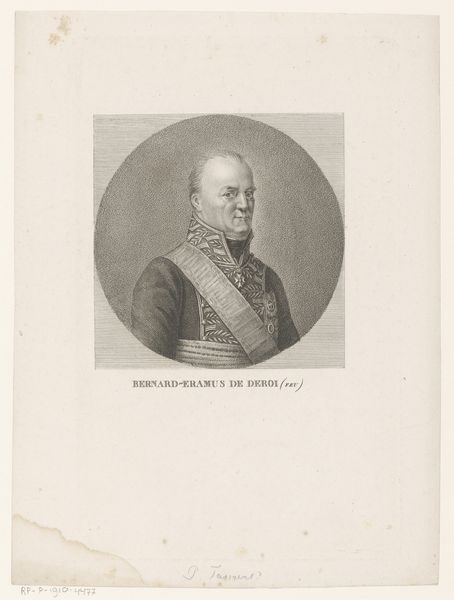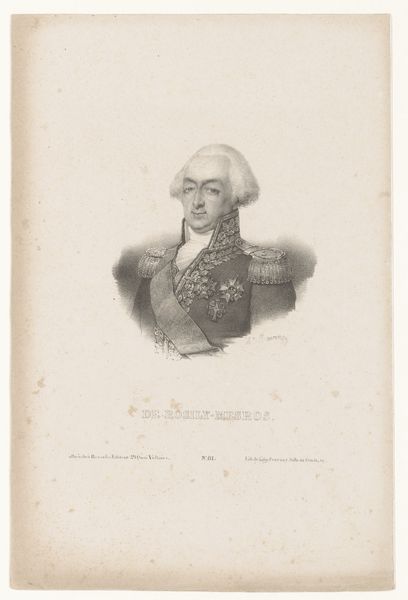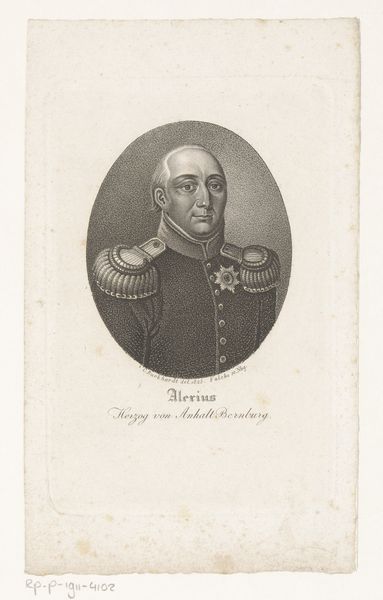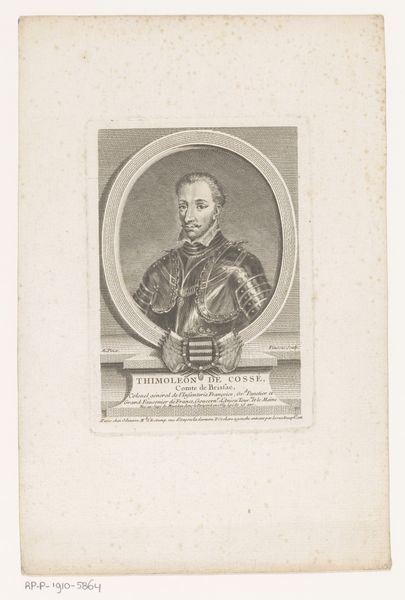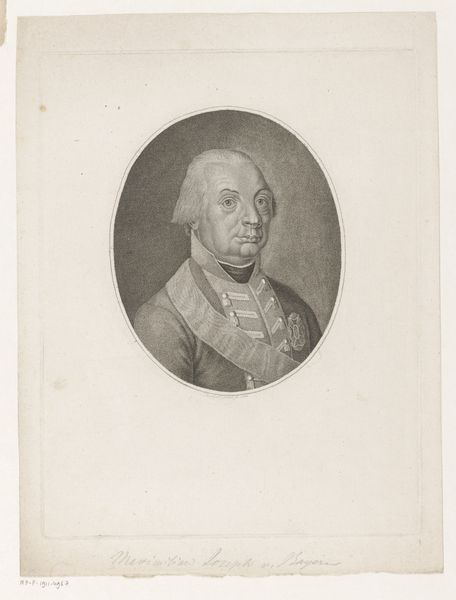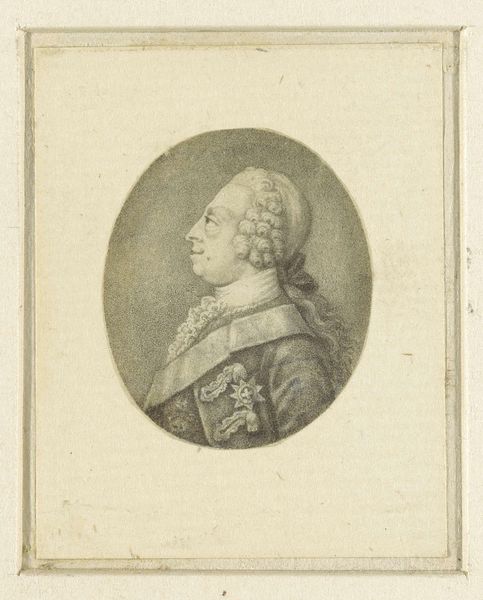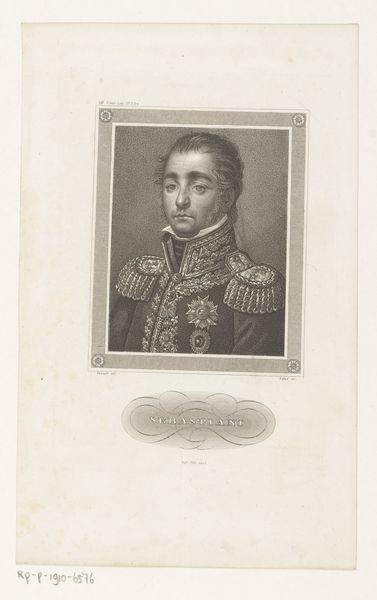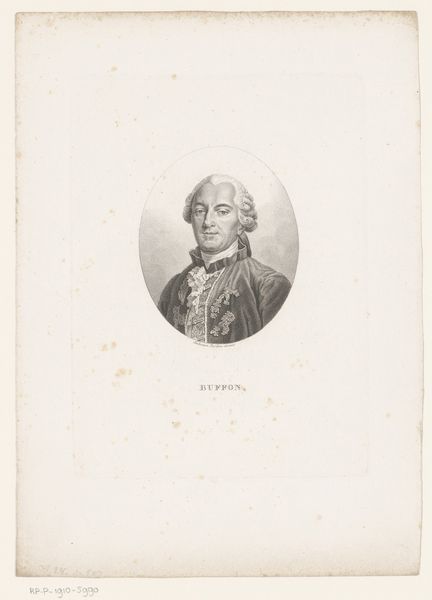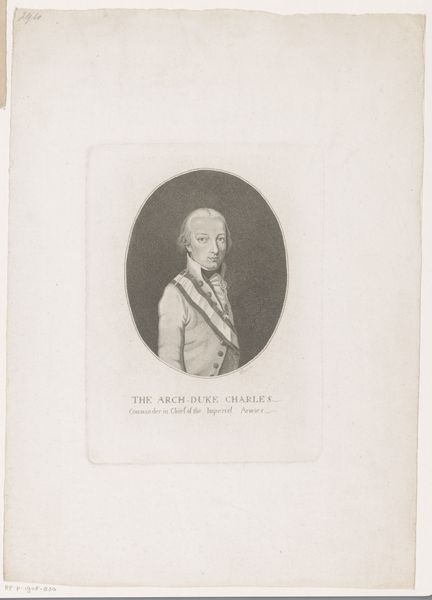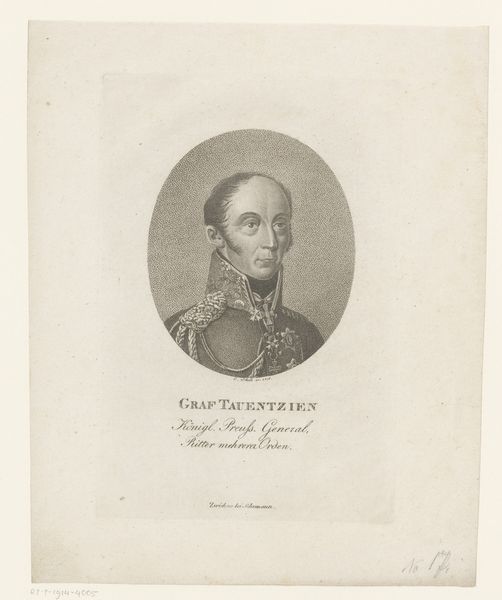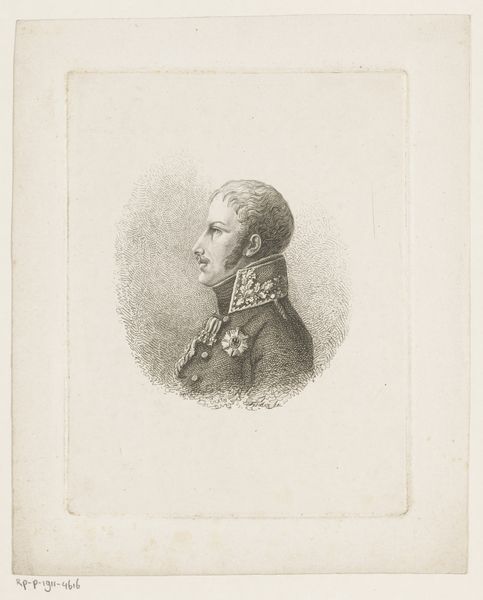
print, engraving
#
portrait
#
neoclacissism
# print
#
academic-art
#
engraving
Dimensions: height 225 mm, width 140 mm
Copyright: Rijks Museum: Open Domain
Curator: Here we have Ambroise Tardieu's "Portret van François Christophe Kellermann," an engraving dating from 1820-1821. A study in restrained dignity, wouldn’t you agree? Editor: It strikes me as quite formal, almost severe. The subject’s face, framed by that tightly controlled oval, conveys a certain rigidity. Tell me more about the materiality of the piece. Curator: As an engraving, it utilizes precisely etched lines to create tone and detail. Observe how the density of lines shapes Kellermann’s features, giving depth and texture to his otherwise austere presentation. It’s Neoclassical, so the emphasis is on line, clarity, and order. Editor: And I'm immediately thinking about the engraver, Tardieu, and the labour involved in creating such detail. Consider the time and skill needed to achieve such control over the material, transforming a copper plate into this likeness. Who was Kellermann? Curator: Kellermann was a marshal in Napoleon’s army. The portrait is a product of its time; look at the meticulous detail given to his uniform—it speaks of rank, status, and military might. A clear visual language designed to communicate power. Editor: Precisely! We see not just a man but an icon representing a hierarchical society and its values. The very act of engraving, replicating images for broader consumption, served to reinforce that power. Who had access to this image and what were they meant to do with it? Curator: Perhaps to admire, perhaps to emulate. It also echoes a shift toward democratization and distribution in the early nineteenth century, a proliferation of reproducible artworks. Editor: This print as an object raises questions of social class and consumption as much as Kellerman's portrait expresses power. I see now why that feeling of severe formality strikes me, it's about the formalization of that system. Curator: Indeed, the power of a clear message reinforced by considered artistic design. It seems that this approach brings together a clear understanding. Editor: Leaving us much to consider about the relationship between a historical portrait, the hands and skills of its maker, and its life circulating as an accessible image.
Comments
No comments
Be the first to comment and join the conversation on the ultimate creative platform.

